
The grand master of the Teutonic Order is the supreme head of the Teutonic Order. It is equivalent to the grand master of other military orders and the superior general in non-military Roman Catholic religious orders. Hochmeister, literally "high master", is only used in reference to the Teutonic Order, as Großmeister is used in German to refer to the leaders of other orders of knighthood.

The Burgraviate of Nuremberg was a state of the Holy Roman Empire from the early 12th to the late 15th centuries. As a burgraviate, it was a county seated in the town of Nuremberg; almost two centuries passed before the burgraviate lost power over the city, which became independent from 1219. Eventually, the burgraviate was partitioned to form Brandenburg-Ansbach and Brandenburg-Bayreuth.

Groitzsch is a town in the Leipzig district, in Saxony, Germany.
Rosina von Graben von Rain, also called Rosina von Rain, was an Austrian noble woman, a member of the Graben von Stein family and heiress of the burgraviate of Sommeregg Castle in Carinthia.

Herren von Graben, also named von (dem) Graben, vom Graben, Grabner, Grabner zu Rosenburg, Graben zu Kornberg, Graben zu Sommeregg, Graben von (zum) Stein, and ab dem Graben was the name of an old (Uradel) Austrian noble family.

The Dohna Feud was a 14th-century dispute between the burgraves of Dohna, who resided in the Eastern Ore Mountains of Central Europe, on the one hand and Saxon nobleman, John of Körbitz and the Meißen Margrave William I on the other. The feud lasted from 1385 to 1402.
Henry IV of Plauen, was High Chancellor of the Kingdom of Bohemia, Burgrave of Meissen, Lord of Plauen, Gera, Greiz, Schleiz and Bad Lobenstein, Lord of Toužim, Hartenštejn Castle, Andělská Hora Castle and Žlutice. He also used the traditional title of Lord of Lázně Kynžvart and, apart from an intermezzo in 1547, he was Lord of Bečov nad Teplou as well.
Henry VI of Plauen was Burgrave of Meissen, Lord of Plauen and Lord of Schleiz and Lobenstein.

Dohna Castle on the once important medieval trade route from Saxony to Bohemia was the ancestral castle seat of the Burgraves of Dohna. Of the old, once imposing double castle only a few remnants of the walls remain. The ruins of the old castle are located on the hill of Schlossberg near the subsequent suburb of the town of the same name, Dohna, in the district of Sächsische Schweiz-Osterzgebirge in Saxony, Germany.
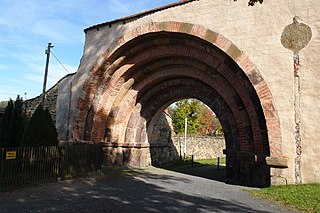
Altzella Abbey, also Altzelle Abbey, is a former Cistercian monastery near Nossen in Saxony, Germany. The former abbey contains the tombs of the Wettin margraves of Meissen from 1190 to 1381.
Margrave Conrad II of Lusatia, also known as Margrave Konrad II of Landsberg, was a member of the House of Wettin. He was Count of Eilenburg and Margrave of Lusatia from 1190 until his death. From 1207, he was also Count of Groitz and Count of Sommerschenburg. He was a son of Margrave Dedi III and his wife, Matilda of Heinsberg, the heiress of Sommerschenburg.

Mildenstein Castle, in German Burg Mildenstein, also called Schloss Leisnig, is located in Leisnig in Landkreis Mittelsachsen, Saxony, Germany. It is a property of the Free State of Saxony and is administrated by the company State Palaces, Castles and Gardens of Saxony.

Buch Abbey, in German Kloster Buch, is a former Cistercian monastery near Leisnig in Saxony.
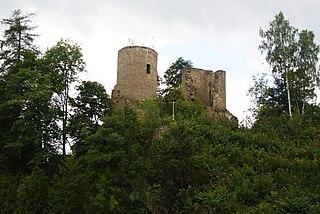
Lauterstein Castle, in German Burg Lauterstein, also called Burgruine Niederlauterstein, is a medieval castle in Niederlauterstein, town of Marienberg, Erzgebirgskreis, Saxony. It has been a ruin since the Thirty Years' War.
Eido I, also Ido, Eid or Ägidius, was the bishop of Meissen from 992 to 1015.

Eduard Wunder (1800–1869) was a German philologist, and from 1843 to 1866 Rector of the Fürstenschule Grimma in Saxony.

The album amicorum was an early form of the poetry book, the autograph book and the modern friendship book. It emerged during the Reformation period, during which it was popular to collect autographs from noted reformers. In the 1700s, the trend of the friendship book was still mainly limited to the Protestant people, as opposed to the Catholics. These books were particularly popular with university students into the early decades of the 19th century. Noteworthy are the pre-printed pages of a friendship book from 1770 onwards, published as a loose-leaf collection by the bookbinder and pressman Johannes Carl Wiederhold (1743-1826) from Göttingen.
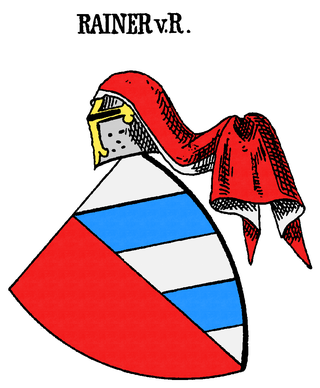
The Rainer zu Rain family is an old Lower Bavarian noble family. The family represented a branch of the Vitztum von Straubing and held the hereditary rank of chief chamberlain in the Duchy of Bavaria. The line from Rain zu Sommeregg, which immigrated to Carinthia at the beginning of the 16th century, was raised to the rank of baron as heirs of von Graben to burgraves and lords of Sommeregg.
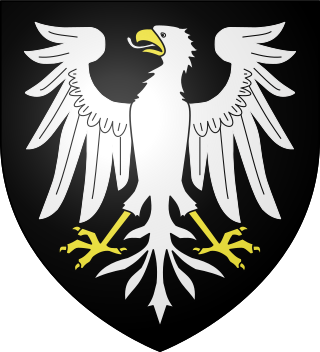
The Arnstein family was a noble family from the Saxony-Anhalt region in Germany.
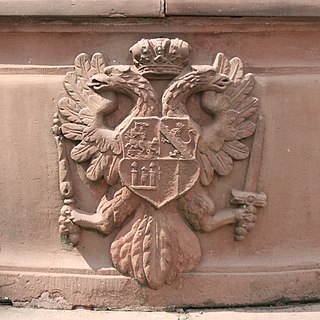
The Burgraviate of Friedberg was a territory within the Holy Roman Empire. It emerged during the Late Middle Ages from the Burgmannschaft of Reichsburg Friedberg in Hesse. Notably, the Burgraviate featured a cooperative constitutional structure and was endowed with manorial privileges by the Emperor, which were reaffirmed multiple times until its dissolution in 1806. The Burgraviate established its territory, which, in addition to overseeing the neighboring Reichsstadt Friedberg and the Freigericht Kaichen, included a narrow strip of land in the southern Wetterau. Consequently, Friedberg Castle can be regarded as the sole reichsständische castle since its inclusion in the Reichsmatrikel in 1431. According to its self-perception, the Kayserliche und des heiligen Reichs-Burg Friedberg, as it was called, was a prominent institution of the Imperial Knighthood and directly subordinate to the king or emperor.